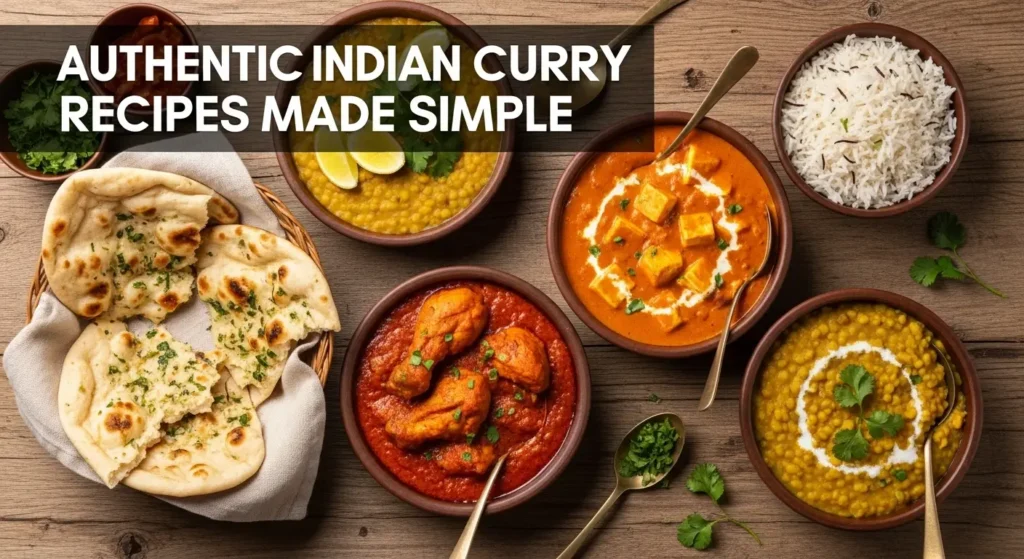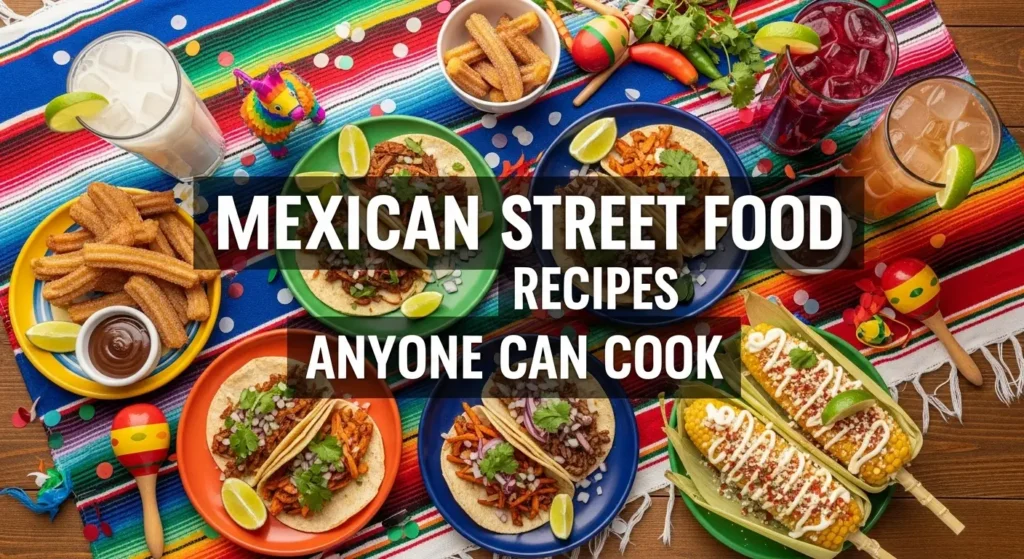When you think of Chinese cuisine, one of the first things that comes to mind is stir-fry. This cooking method has been around for centuries, prized for its speed, simplicity, and ability to lock in flavor. But today, many chefs and home cooks are giving stir-fry a modern twist—adding new ingredients, experimenting with sauces, and blending global flavors.
In this article, we’ll explore Chinese stir-fry recipes with a modern twist that balance tradition with innovation. You’ll learn how to create dishes that are healthy, quick to prepare, and full of vibrant flavors. Whether you’re cooking for a weeknight dinner or hosting friends, these recipes will impress.
Why Stir-Fry Still Rules the Kitchen
Stir-frying has remained popular for several reasons:
- Quick cooking method – most dishes are ready in under 20 minutes.
- Nutrient preservation – vegetables keep their crunch, color, and vitamins.
- Flavor-packed meals – sauces and spices coat every bite evenly.
- Versatility – you can adapt it to any protein, vegetable, or diet.
With a modern approach, stir-fry can become even more exciting. Think: quinoa instead of rice, tofu with spicy peanut sauce, or even fusion recipes with Italian, Thai, or Mediterranean influences.
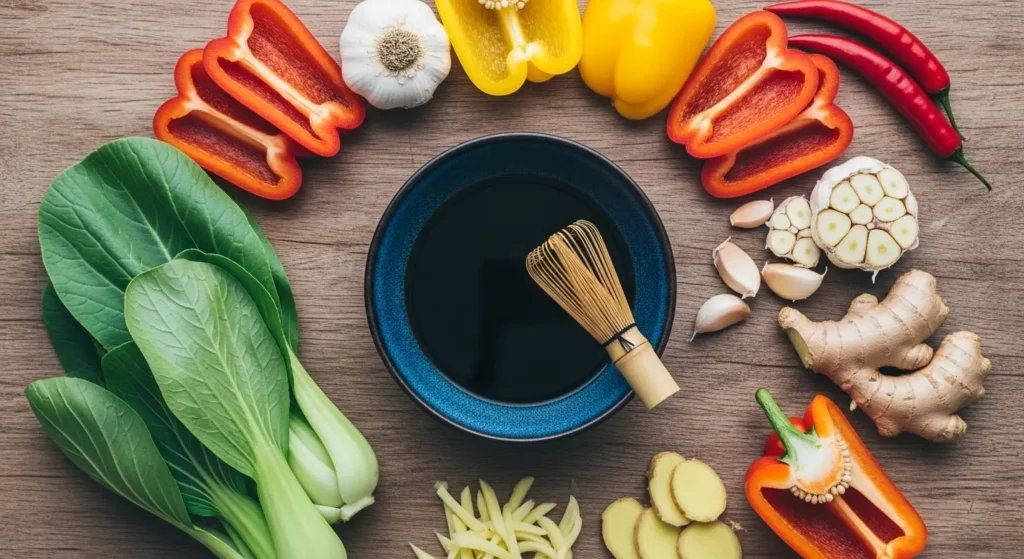
The Essentials of a Great Stir-Fry
Before we dive into the modern recipes, let’s break down the basics.
Key Ingredients
- Aromatic base: Garlic, ginger, and scallions.
- Proteins: Chicken, beef, pork, shrimp, tofu, or tempeh.
- Vegetables: Broccoli, bell peppers, snap peas, mushrooms, bok choy.
- Sauces: Soy sauce, oyster sauce, hoisin, rice vinegar, sesame oil.
Equipment You Need
- Wok or large skillet – for even cooking at high heat.
- Spatula or wok ladle – to toss ingredients quickly.
- Sharp knife – for thin, uniform cuts.
Tip: Always prep everything in advance. Stir-frying moves fast, so chopping and sauce mixing should be done before you turn on the heat.
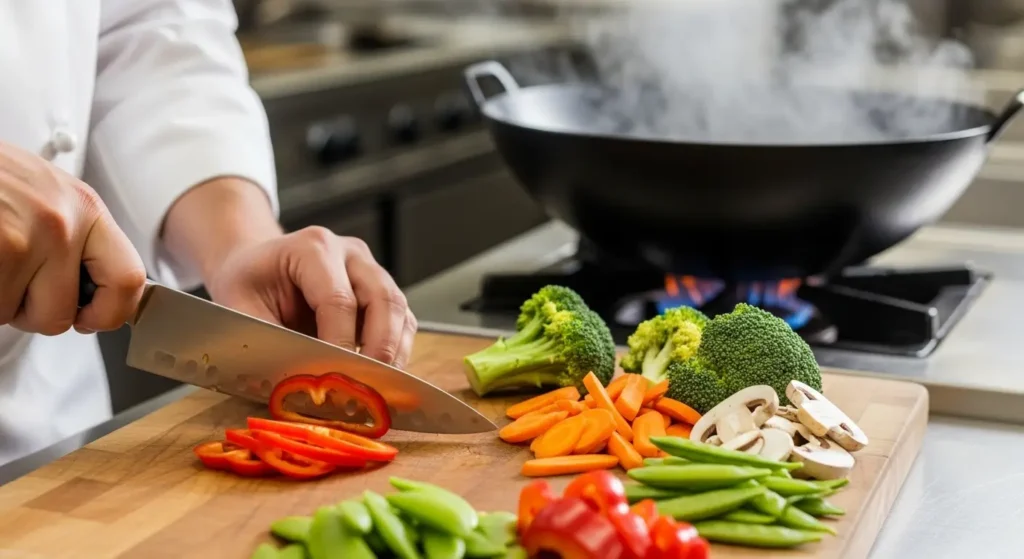
Modern Twists on Classic Stir-Fry
Now let’s explore creative recipes that reimagine stir-fry while keeping its soul intact.
1. Teriyaki Quinoa Stir-Fry
Swap rice with protein-packed quinoa. Add teriyaki sauce, edamame, and roasted cashews for crunch.
Ingredients:
- Cooked quinoa (2 cups)
- Chicken breast or tofu (200g)
- Bell peppers, broccoli, carrots (2 cups chopped)
- Teriyaki sauce (3 tbsp)
- Sesame seeds & green onions for garnish
Modern Twist: Using quinoa makes this dish gluten-free and perfect for health-conscious eaters.
2. Kung Pao Shrimp with Mango
A fresh fruity spin on the famous Sichuan recipe.
Also Read: Easy Mediterranean Chickpea Salad Recipes for Beginners
Ingredients:
- Shrimp (300g)
- Diced mango (1 cup)
- Zucchini and bell peppers (2 cups)
- Kung Pao sauce (soy sauce, vinegar, chili flakes, peanuts)
Modern Twist: Mango adds sweetness to balance the chili heat, making the dish both refreshing and bold.
3. Vegan Sesame Tofu with Kale
For plant-based eaters, this is a power-packed stir-fry.
Ingredients:
- Extra-firm tofu (200g, cubed and pan-fried)
- Kale leaves (2 cups)
- Mushrooms & snow peas (1.5 cups)
- Sesame soy glaze (soy sauce, maple syrup, sesame oil, garlic)
Modern Twist: Kale replaces traditional greens, adding more nutrients and a slight bitterness that pairs beautifully with sesame.
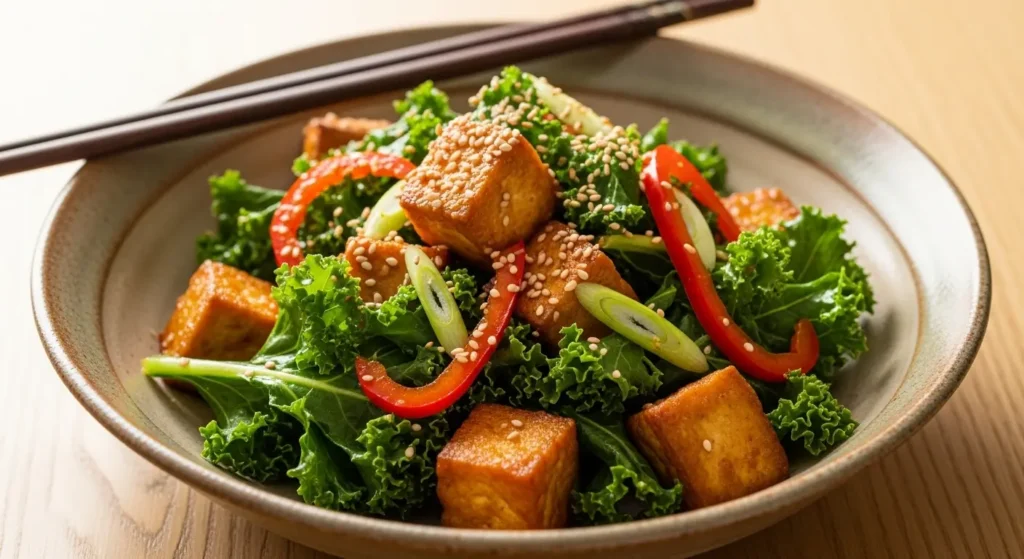
4. Mediterranean Fusion Stir-Fry
Why not mix Chinese technique with Mediterranean ingredients?
Ingredients:
- Chicken strips (200g)
- Cherry tomatoes, zucchini, olives (2 cups)
- Garlic & oregano-infused olive oil
- Soy sauce & lemon juice mix
Modern Twist: A delightful cross-cultural dish—savory, tangy, and fresh.
5. Spicy Beef & Kimchi Stir-Fry
Adding Korean flavors to a Chinese classic.
Ingredients:
- Thinly sliced beef (250g)
- Kimchi (1 cup)
- Green beans (1.5 cups)
- Gochujang paste mixed with soy sauce
Modern Twist: Kimchi brings probiotics and bold flavors, making the dish unique and gut-friendly.
Also Read: Easy Italian Pasta Recipes for Beginners
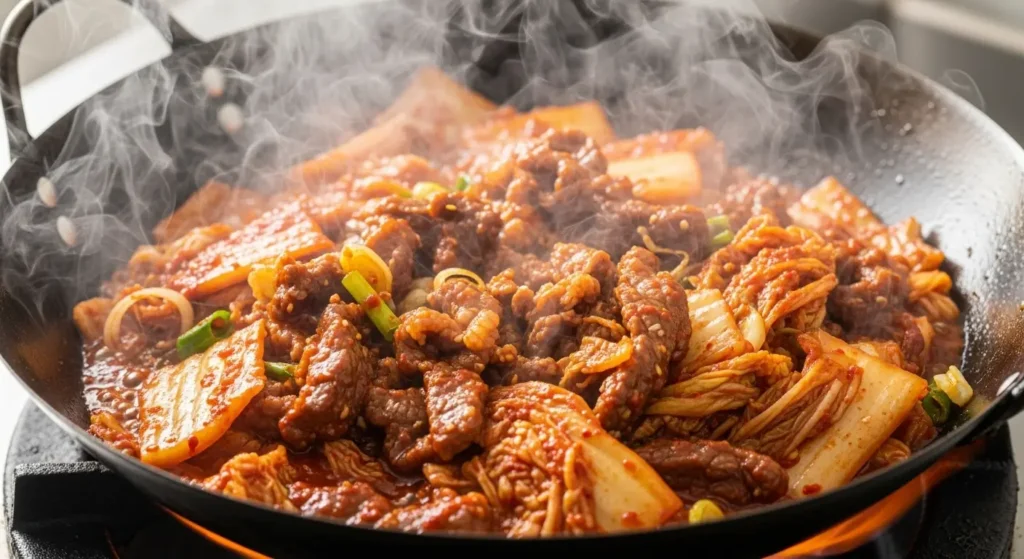
Flavor Hacks for Modern Stir-Fry
Want to take your stir-fry to the next level? Try these tips:
- Use citrus: Add lime or orange zest for freshness.
- Mix textures: Pair crunchy veggies with soft noodles or grains.
- Play with sauces: Swap soy sauce for tamari, coconut aminos, or miso-based dressings.
- Add nuts & seeds: Cashews, peanuts, or sunflower seeds bring crunch.
- Experiment with oils: Toasted sesame oil, chili oil, or even avocado oil can add depth.
Health Benefits of Modern Stir-Fry
Modern stir-fries aren’t just delicious—they’re also incredibly nutritious.
- Low in calories but nutrient-dense thanks to fresh vegetables.
- High in protein when made with tofu, shrimp, chicken, or beef.
- Gluten-free & vegan options available when swapping ingredients.
- Supports gut health if using fermented add-ins like kimchi or miso.
Quick Nutritional Comparison
| Dish | Calories (per serving) | Protein | Fiber |
|---|---|---|---|
| Teriyaki Quinoa Stir-Fry | ~350 | 18g | 6g |
| Kung Pao Shrimp w/ Mango | ~400 | 25g | 4g |
| Vegan Sesame Tofu | ~320 | 20g | 7g |
Common Mistakes to Avoid in Stir-Frying
Even seasoned cooks slip up. Here are pitfalls to dodge:
- Overcrowding the wok – leads to steaming instead of frying.
- Skipping high heat – stir-fry needs quick cooking to seal flavor.
- Not prepping in advance – chopping during cooking ruins timing.
- Overcooking veggies – results in mushy texture.
- Adding sauces too early – they may burn; add near the end.
Key Takeaways
- Chinese stir-fry remains a timeless cooking method, but modern twists make it exciting.
- Quinoa, kale, mango, kimchi, and Mediterranean ingredients can add fresh flavors.
- Health-conscious eaters benefit from stir-fry’s nutrient density and flexibility.
- Simple hacks like citrus zest, fusion sauces, and nuts elevate your dishes instantly.
FAQs About Chinese Stir-Fry Recipes with a Modern Twist
1. Can I make stir-fry without a wok?
Yes! A large nonstick skillet works fine. Just ensure high heat and enough space to toss ingredients.
2. How do I keep stir-fry veggies crisp?
Cook them quickly on high heat and avoid overloading the pan.
3. What noodles work best for stir-fry?
Lo mein, rice noodles, soba, or even spaghetti can work in fusion recipes.
4. Can I meal prep stir-fry?
Yes, prep ingredients in advance and cook fresh. Or make a batch and store in the fridge for 3–4 days.
5. What protein is best for a modern stir-fry?
Tofu, shrimp, chicken, and beef are classics, but you can also try tempeh, seitan, or even chickpeas.
Conclusion
Chinese stir-fry is more than just a quick meal—it’s a canvas for creativity. By adding modern twists like quinoa, kale, mango, or kimchi, you can transform everyday stir-fry into a vibrant dish full of flavor and health benefits.
So the next time you reach for your wok, don’t just stick to the usual soy and broccoli combo. Experiment, play with flavors, and create your own Chinese stir-fry recipes with a modern twist.

